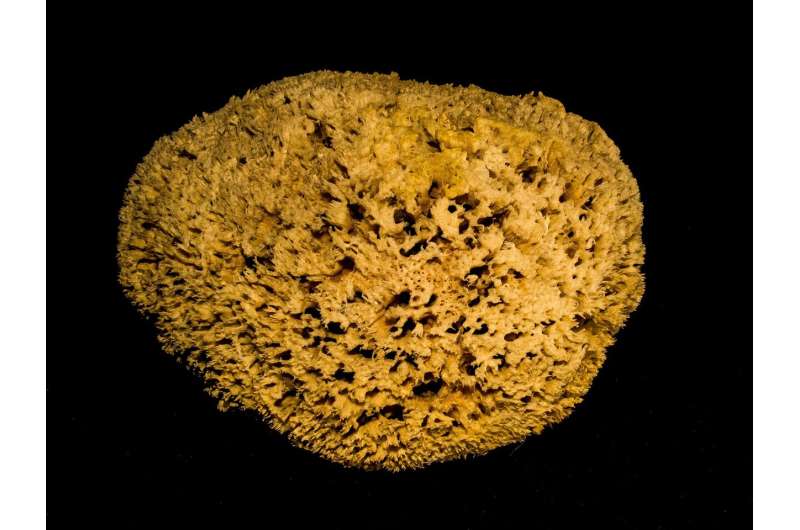August 30, 2023 report
This article has been reviewed according to Science X's editorial process and policies. Editors have highlighted the following attributes while ensuring the content's credibility:
fact-checked
peer-reviewed publication
trusted source
proofread
Sea sponge tissue found to hold bits of DNA from fish living around them

A team of environmental and marine biologists from Liverpool John Moores University and the Natural History Museum, both in the U.K., has found that studying sea sponge tissue can reveal the nature of the fish community living around them. In their article, published in Proceedings of the Royal Society B: Biological Sciences, the group found fish DNA when studying three species of sea sponge.
Sea sponges live on the ocean floor—once they pick a spot to call home, they anchor themselves to a base and remain fixed in that place for the rest of their existence. They survive by filtering nutrients and oxygen from ocean water as it moves through their porous tissue. They also emit waste.
In this new effort, the researchers in Britain found that the water passing through sea sponge pores also carries DNA from fish that live in the area and that it becomes trapped in the sea sponges' tissues. This DNA provides a record of local biodiversity.
The work involved collecting and studying three species of sea sponges living in the North Atlantic Ocean. In all, the team obtained 64 specimens and studied their anatomy. In addition to learning more about the sea sponge, the research team found that DNA captured by its tissue could be used to document the fish that live in the area.
They found that by classifying the fish that shed the DNA via sequencing, they were able to create a map of a given underwater ecosystem. They were able to discriminate assemblages by region of the ocean (from Svalbard to Western Greenland, for example) and the depth of the habitat and even the level of protection.
The researchers note that there is generally a high cost associated with conducting ocean biodiversity studies—collecting and studying sea sponges could offer a much cheaper option.
More information: Trapped DNA fragments in marine sponge specimens unveil north Atlantic deep-sea fish diversity, Proceedings of the Royal Society B: Biological Sciences (2023). DOI: 10.1098/rspb.2023.0771. royalsocietypublishing.org/doi … .1098/rspb.2023.0771
Journal information: Proceedings of the Royal Society B
© 2023 Science X Network





















